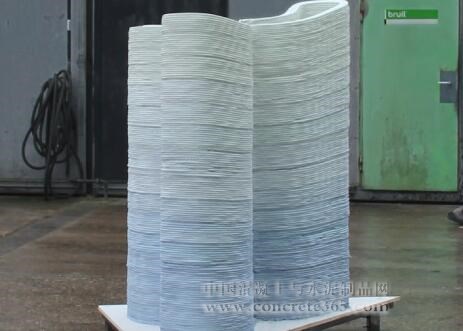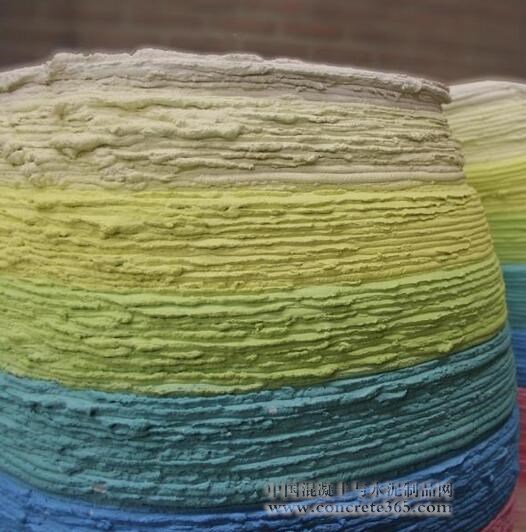We've seen all kinds of architectural 3D printers in the past few years, but these machines seem to have a big problem. From any point of view, 3D printers can only squeeze out some thick gray concrete layers, and the details and accuracy of 3D printing can not be reflected at all. Now, a Dutch company called Bruil is trying to change that, not only by successfully 3D printing concrete objects with actual architectural value at a high resolution, but also by printing concrete in different colors.

About a year ago, they showed off some interesting architectural results developed in collaboration with industrial 3D printing expert 3Dealise: a 1.6-meter-high twisted H shape printed in 3D. This innovation fully reflects their intention to develop large 3D printed concrete structures that can be used for basic walls. "With this technology, architects will also fully enjoy the design freedom brought by 3D printing technology." Bruil said at the time.

Since then, they have apparently perfected their concrete 3D printing technology. Now, at Material Xperience and Gevel 2016 in Rotterdam (January 27-29), they showed three structures up to 1.6 meters high, all of which were realized by a new architectural 3D printing technology, and all of them were in color. "Current concrete 3D printing is largely related to the main frame of the building, such as those projects developed in China.". And we want to prove to architects that 3D printing can also be used to change the spatial language of architecture. Eventually, we can even 3D print facades with high aesthetic value. Theo Voogd, Bruil's marketing and innovation manager, introduced the new concrete 3D printing technology.

Basically, the company has developed a way to 3D print concrete in a high-resolution way. Since they can make their own cement on site, it's easy to print out colored objects and even create color-changing effects. In addition, Bruil's machine can realize different shapes and structures, such as waves, thus providing architects with a creative device, rather than a simple manufacturing tool, to realize their ideas through concrete, whether shape, color or texture. Theo Voogd therefore predicts that this will have a revolutionary impact on the construction industry. To further suit the needs of architects, Bruil has also developed a custom CAD software that can easily convert 3D models into print paths for their machines. Importantly, it also allows architects to preview the final results before starting an expensive 3D printing process.

So far, though, Bruil's technology is still in development. The company says it is also optimizing the technology and using it to try out various possible geometries. Bruil expects the technology to take another two years to 3D print large-scale projects. Before that, they are considering some construction pilot projects. "This is the perfect moment for architects to start experimenting with the freedom of design that this new technology offers." They said.



 浙公网安备33010802003254号
浙公网安备33010802003254号